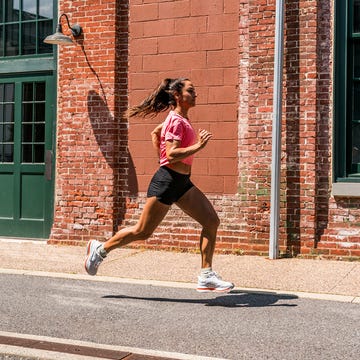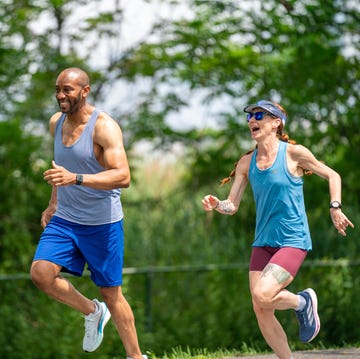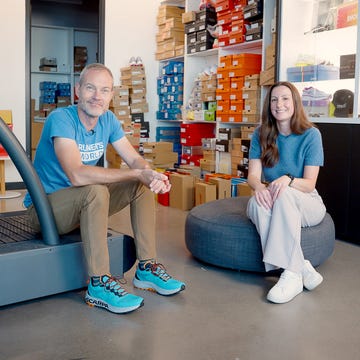During the Paris Olympics, Brodie Kane, a podcaster from New Zealand, posted a video to Instagram, railing against safety pins. The post garnered more than 11,000 likes and 750 comments.
In the video, she asked, “Why are the greatest athletes on Earth still having to safety-pin their clunky race bibs to their race outfits?” Claiming technology and aerodynamics as factors, she closed, “Why are they doing this still at the Olympics? Make it make sense.”
In my world, it does make sense.
Safety-pinning a number to your shirt is a time-honored tradition in running, done at every level from tot trots to pro races. A decade ago, my daughter ran her first fun run as a 2-year-old; two pins affixed a comically large bib (no. 312) that covered her green tank top from armpits to waist and flapped in the wind as she lumbered along a half-mile loop. I used those very same pins a day later to run a half marathon (no. 1412).
In my toiletry bag, I keep no fewer than 10 sets of pins—stuck together in fours. One of those is a set of fancy gold pins that were attached to the label on a Tracksmith singlet. The others all came from some kind of race.
How many times have you pierced a race singlet with four pins? And, how many of those pins are still bouncing around in your car’s cup holders, stashed in the pocket of a Dopp Kit, stored inside an old prescription medicine bottle, or rusting away and still clinging to that old race bib wherever you store your race mementos?
The safety pins on your bib look nearly identical to the pins patented by inventor Walter Hunt in 1849: coiled spring on one end, clasp on the other. In the 150 years since, the product has evolved very little. We continue to use safety pins because they’re incredibly lightweight, insanely cheap, ubiquitous, and impossible to improve upon.
But, that hasn’t stopped folks from trying.
For example, many people tell me that BibBoards, oval-shaped snap buttons intended to replace safety pins, are a superior solution, with reasons that include getting custom designs. Okay, fair, if you need flair, I’ll grant you that. BibBoards supporters claim that they don’t leave holes in your shirt like pins. To myth-bust that, I remind them that shirts are made of threads, thus thousands—if not millions—of tiny holes already exist in the fabric. BibBoards, on the other hand, can leave a “dimple” in your shirt, which the company’s own FAQ says can be fixed by using a warm iron. Pins are removed easily and invisibly, no extra tools required.
RaceDots are similar to BibBoards but use strong magnets instead of plastic snaps. They’re available in dozens of designs. Those products cost anywhere from $12 to $20 per set. For the same cost, you can get more than 1,000 pins delivered to your door tomorrow via Amazon.
You may say that I’m just being old-fashioned. Nah, I just find that such products are solutions to a problem that doesn’t exist. (While I’m at it, here are other so-called solutions: Runbell and Lock Laces. I’ll bank the extra cash and give a “passing on your left” shout after I’ve tied a standard knot in my shoes that’s sure to stay tight—no granny knots here.)
But who am I to tell you how to blow your cash? I’m the guy who tracks my runs with a Garmin Fenix 8 that costs $1,200 when a $12 Casio could technically be all I need. The Garmin brings me joy, though, in the same way those safety-pin upgrades may make you happy. In that case, go ahead; disregard the humble safety pin. But if you happen to need some on race day, I’ll have plenty to share.
Jeff is Runner-in-Chief for Runner’s World and the director of product testing. He has tested and reviewed running shoes, GPS watches, headphones, apparel, and more for nearly two decades. He regularly tests more than 100 pairs of shoes each year, and once had a 257-day streak running in different models. Jeff can usually be found on the roads, racing anything from the mile to a marathon, but he also enjoys racing up mountains and on snowshoes. When he’s not running, you’ll probably find him hanging from a ladder making repairs and renovations to his house (he’s also director of product testing for Popular Mechanics).













